English Heritage sites near Somerby Parish
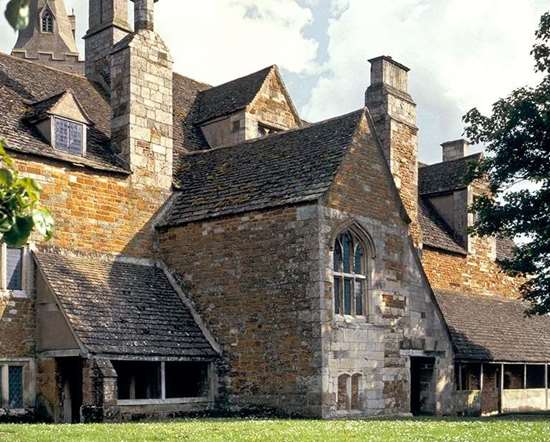
LYDDINGTON BEDE HOUSE
11 miles from Somerby Parish
Set beside the church of a picturesque ironstone village, Lyddington Bede House originated as the late medieval wing of a palace belonging to the Bishops of Lincoln.
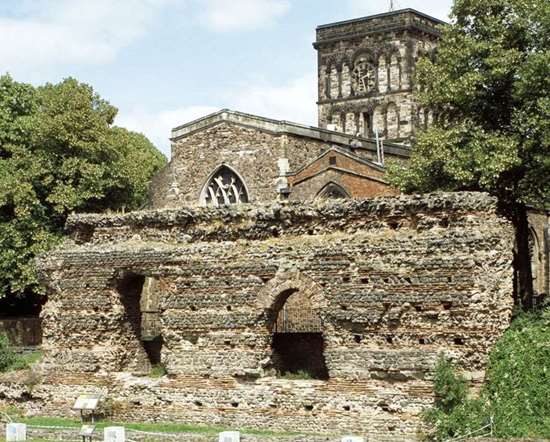
JEWRY WALL
13 miles from Somerby Parish
A length of Roman bath-house wall over 9 metres (30 feet) high, near a museum displaying the archaeology of Leicester and its region.
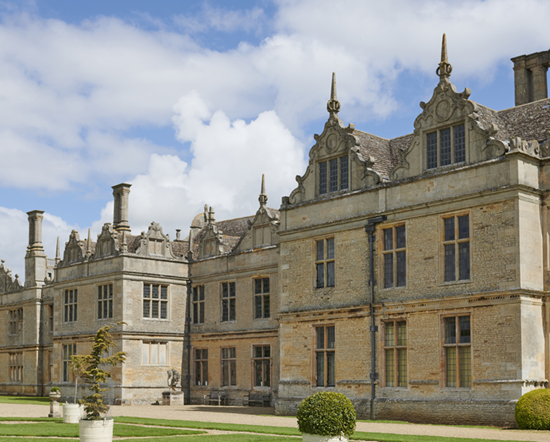
KIRBY HALL
15 miles from Somerby Parish
Kirby Hall is one of England's greatest Elizabethan and 17th-century houses. Begun by Sir Humphrey Stafford, it was purchased by Sir Christopher Hatton, one of Queen Elizabeth's 'comely young men'.
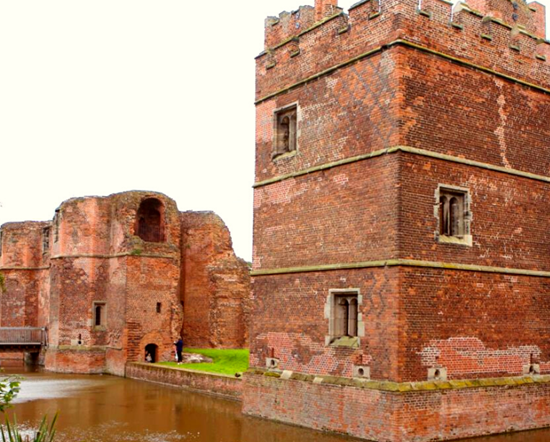
KIRBY MUXLOE CASTLE
16 miles from Somerby Parish
The picturesque moated remains - including the fine gatehouse and a complete corner tower - of this brick-built fortified mansion have recently been extensively conserved by English Heritage.
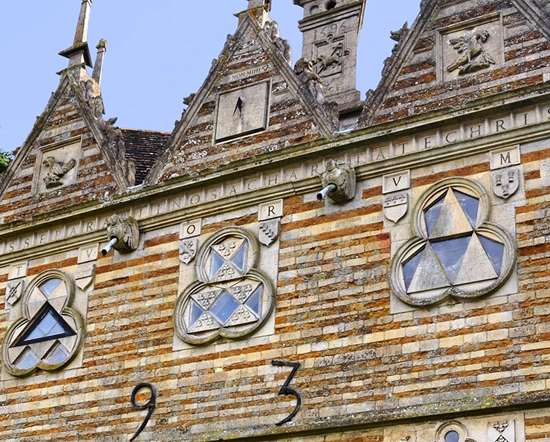
RUSHTON TRIANGULAR LODGE
18 miles from Somerby Parish
This delightful triangular building was designed by Sir Thomas Tresham (father of one of the Gunpowder Plotters) and constructed between 1593 and 1597.
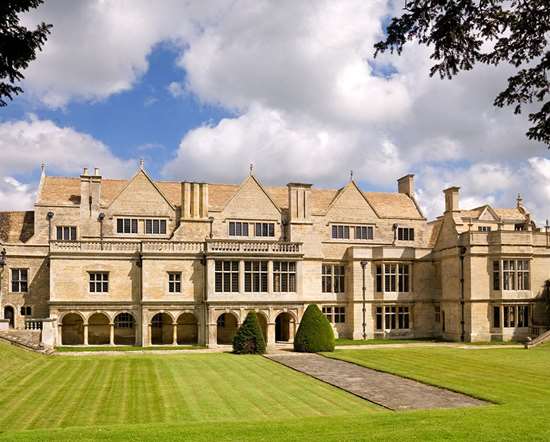
APETHORPE PALACE
18 miles from Somerby Parish
Stately Apethorpe Palace, owned by Elizabeth I, then favourite Royal residence for James I and Charles I, has one of the country's most complete Jacobean interiors.
Churches in Somerby Parish
All Saints Pickwell & Leesthorpe

All Saints Church
Pickwell
Melton Mowbray
01664 561 909
ALL SAINTS, PICKWELL with LEESTHORPE
What is our Church?
Our church is a fellowship of Christians in this locality - and it is a special building. Meeting together is a means of focusing on our faith and offering a welcome to our neighbours. Villagers appreciate the church for baptisms, weddings and funerals and as a physical presence in the centre of the village.
The Church is a Grade 1 listed building, with parts dating from the 13th Century and has traditionally hosted monthly services of Holy Communion, the Christmas Day Service for the Benefice, and the Easter Eve Vigil. Members of the congregation travel to the other churches in the Benefice for other services, and we welcome those who travel to us. There are 27 on the Church Electoral Register and an active PCC. We have an excellent programme of regular giving by the congregation and by other villagers who rarely attend Church services, and an annual budget which inevitably includes maintenance and improvements to our ancient building as well as mission and ministry initiatives. Fundraising events are well supported.
How does the Church relate to the community?
The Church brings everyone together: it is a place to go to see neighbours and villagers whom you may otherwise see infrequently. In addition to the common bond of Christian beliefs, the Church people tend to communicate very well with newcomers through the village magazine and through individuals making themselves known. There are around 170 residents, with a few children. A few families have been here a long time but their children have grown up and moved away, returning for festivals. There is a core of people who have been here a long time. The Church always welcomes new people to come in and help with Church life and seeks ways to attract them. We have a newly formed group of bell ringers some of whom do not attend Church regularly, but the bells when rung do remind the community of the Church's presence. The church clock chimes each hour, keeping track of time in the village.
What resources do we need?
Resources needed within our church building - a water supply for kitchen/servery and toilets, new heating system, repairs to the windows and the roof. We also need to encourage the financial and human resources to maintain and sustain all aspects of the church building and fellowship.
Our Associate Priest
Back in February 2020, Rev'd Jane Walker and her husband Bill moved from Nottingham to The Rectory in the Benefice, and there was a splendid service of Welcome and Licensing for Jane as Associate Priest. Her role is part-time, and focuses primarily on providing spiritual care, support and encouragement, strengthening the valuable links which exist between the churches and village life.
History and Architectural information
The village of Pickwell, whose Saxon name means 'the stream by the peaks', stands on one of the old Bronze-Age highways which ran from Tilton, north-easterly through Somerby and Stapleford, on to Lincoln. It was in the Saxon 'wapentake' of Gartree and gave its name to a sizable 'soke', a 'soke' being roughly the Danish equivalent of the later manorial establishments in England. It was held before the Norman Conquest by Ordmar, and Domesday Book records that it was then allotted with a number of Leicestershire villages to Geoffrey de Wirce.
Domesday describes the village : "Buter holds of Geoffrey fourteen carucates of land. Ten ploughs were there. In the demesne are four ploughs and fourteen serfs : and seven villanes, with a priest, and twenty-six sokemen, and nine bordars, have thirteen ploughs. There is a mill of fourpence (value): and fifty acres of meadow. It was worth forty shillings: now four pounds". The mill, no doubt, was sited on the stream, and it was this which gave Pickwell its importance : and there was a priest.
There is no trace today of the church which the priest served. It may have been a building of wood, or a small stone building pulled down to make way for the Norman church soon to be built on the same site. Of this church the font is the clearest indication. It is circular, shaped like a drum with intersecting semi-circular arches carved round the outside. It may be dated sometime in the twelfth century and implies a small aisleless Norman church with an apse at the east end and perhaps incorporating the present south doorway.
About 1225 it was found necessary to enlarge the church and the present north arcade (the row of pillars and arches on the left side of the nave) was built. Professor Pevsner (Leicestershire and Rutland 1960) thus describes it: This is of five bays, of which the last two were blocked soon afterwards. It seems that rebuilding had been intended on a grander scale than was later accepted. The arcade has double-chamfered arches, still of round shape. The capitals of the circular piers include one with stiff-leaf."
Seventy years later, about 1300, a similar enlargement was made on the south side of the nave. Here the arches are pointed and narrower and the piers more slender. At the eastern end there are remains of a lancet-headed opening which may have given access to a loft. The south aisle is particularly splendid with buttresses and niches. Of this same period is the chancel with its tall transomed 'decorated' windows and its sedilia, and also the clerestory. The roof was removed and the row of windows on each side of the nave above the' arcades were inserted to give more light to the larger church. This was a common practice is Leicestershire churches in the fifteenth century, but a 'decorated' clerestory is comparatively rare.
The present building was completed in the fifteenth century with the building of the present 'perpendicular' tower with its battlements and pinnacles and the two tall transomed bell-openings. In 1861 it was re-roofed and 'restored', and its furniture replaced.
The Patrons of the Living
The first recorded patron was Roger de Camville in the reign of Henry I, who was also lord of the manor. Another manor had been held by the Sproxtons; each were held in fee of the honour of Mowbray. In the sixteenth century the Curzon family held both the lordship of the manor and also the advowson. In 1561 Queen Elizabeth I granted them to William Cave, whose descendant, John Cave, was vicar of Pickwell at the time of the Rebellion. A Royalist, he suffered much at the hands of the Roundheads and is said to have been dragged forcibly from the pulpit. His son William attained distinction after the Restoration and became Canon of Windsor and Chaplain to Charles II.
In 1637 manor and advowson were sold to the Campden family, and at the beginning of the eighteenth century the Earl of Gainsborough purchased them. During the twentieth century the advowson was conveyed to the Leicester Diocesan Board of Patronage.
Somerby: All Saints
St Mary the Virgin

Burrough-on-the-Hill
01664 561 909
More information about our church, at the heart of the village
www.british-history.ac.uk/vch/leics/vol5/pp61-8 www.explorechurches.org/church/st-mary-virgin-burrough-hillThe church stands on high ground on the north-west side of the village street. It consists of a chancel, a clerestoried nave, north and south aisles, a south porch, and a west tower with a vestry to the north of it.
The fabric is of ironstone and limestone and the roofs are of lead.
The oldest parts of the church probably date from the early 13th century, and a round-headed lancet window in the south wall of the chancel may indicate a date as early as 1200. (fn. 145) A similar 'low side' window in the north wall has a pointed head.
The nave arcades date from the early 13th century and consist of three pointed arches supported on circular piers with 'water-holding' bases. Hoodmoulds to the arches have carved masks as stops and keystones. Both arcades lean outwards, particularly that on the north side.
The wide lancent windows of the clerestory may be of the same date as the arcades or a little later.
The font is a fine example of the early 13th century. It consists of a bulbous circular bowl decorated with a band of foliage, below which is a row of pointed arches filled alternately with masks and rosettes. The stem has ten engaged shafts, the alternate vertical mouldings between them being enriched with dog-tooth ornament. A dog-tooth moulding also decorates the circular base.
The lower part of the tower dates from the 13th century but the much-restored belfry stage and the arcaded parapet which surmounts it were originally built in the 14th. The parapet is decorated with ball-flower ornament and a short octagonal spire rises from behind it
At the east end of the south aisle is the stone effigy of a man in armour, his feet resting on a lion, and in the north aisle are the remains of a woman's effigy. These are thought to represent William Stockton (d1470) and Margaret, his wife.
A mural tablet in the north aisle commemorates Edward Cheseldyn (d1691),( the Queens surgeon), his mother in law, wife and daughter (1691-1718); another is to Charnel Cave (d1792) with members of his family (1787-1833).There are also tablets in the church to William Brown (d1814), rector; to Evelyn Burnaby, rector, 1873-83; to his wife and infant daughter (d1873); and to his father, Revd GA Burnaby (d1872). Other tablets include those to WA Peake (d1912) and Sir Raymond Greene, Bt (d1947).
Stained glass windows are in memory of members of the Peake, Burnaby, and Chaplin families.
Extensive alterations to the church took place in the 14th century when the aisles were probably rebuilt and the south porch added. Several of the windows are of this date and the south aisle contains a trefoil-headed piscina. The chancel appears to have been altered at much the same period. The roofs are of low pitch; a dated timber in the nave suggests that they were renewed in 1657.
The roof principals rest on medieval carved corbels. Attempts to strengthen the tower were made in the 17th century. A large buttress dated 1629 was erected in the middle of the south wall and two others were built against the west wall. In 1791 the tower was leaning to the south-west in spite of the buttresses, and was said to be in 'a very decayed state'. By 1795 it had been repaired. (fn. 146)
A restoration of the church was carried out by Henry Goddard of Leicester in 1860 when traces of the colour with which the aisles and roof had been adorned were found. (fn. 147) At the same time the font was restored and new pews, altar rails, and pulpit were installed. (fn. 148)
The chancel was rebuilt in 1867 when the present east window was inserted. (fn. 149) In 1878 the tower and spire were completely rebuilt, omitting the 17th-century buttresses, and a vestry was added against the north wall. The architect was Charles Kirk of Sleaford (Lincs.). (fn. 150)
The outer walls of the church were repaired in 1893. (fn. 151) After the First World War inscribed oak panelling was installed in the porch to commemorate those who served in the war.
The church still has examples of the original 1860 pitch pine pews and oak carved pulpit, which contibute greatly to its traditional appeal.
In the 1980s a new elaborately carved Tickell pipe organ was installed.
The village of Burrough on the Hill has many historical connections including being the meeting place of the Edward and Mrs Simpson and the home of the Cheltenham Gold Cup winner, Burrough Hill Lad, who was born on (what is now called) Kings Lane.
It lies on the western edge of the uplands of east Leicestershire, about twelve miles north-east of Leicester.
The ground falls from nearly 700 ft. in the north-east of the parish to 350 ft. in the south-west. At the extreme northeast is the earthwork known as Burrough Camp, (fn. 1) an Iron Age fort which occupies a promontory and commands a wide view of the Wreake valley.
The Iron Age fort at Burrough Hill gives Burrough its name. The village was formerly called Erdeborough, a name which survived until the last quarter of the 19th century, (fn. 28) although probably by then in a consciously archaic way. The fort itself was perhaps known as 'Miccilberuhill' c. 1260. (fn. 29) Leland recorded that in the 16th century 'to these Borow Hills every year on Monday after Whit Sunday come people of the country thereabout, and shoot, run, wrestle, dance, and use like other feats of exercise'. (fn. 30) Burton states that such sports used to take place, (fn. 31) but they had apparently been discontinued in his day; they were revived later and again abandoned in the 18th century. (fn. 32) In the early 19th century the Melton Hunt established a race meeting at Burrough on the Wednesday after the second Sunday in June. (fn. 33) These races were held until about 1870 (fn. 34) and in 1871 a large number of strangers were at Burrough for the steeplechases on 2 April when the census was taken. (fn. 35) These particular races were more likely to have been at Melton.
In 1955 games were played on the hill on Whit Monday.
In 2022, Burrough on the Hill is a thriving village with around 150 residents. It has a public house, a brewery, a livery yard, a coffee shop and office complex, a memorial to the 10th Battalion parachute Regiment and a physical rehabilitation centre.
Pubs in Somerby Parish
Stag & Hounds

4, Main Street,, Burrough on the Hill, LE14 2JQ
(01664) 454250
Stilton Cheese

High Street,, Somerby, LE14 2QB
(01664) 454394
stiltoncheeseinn.co.uk
